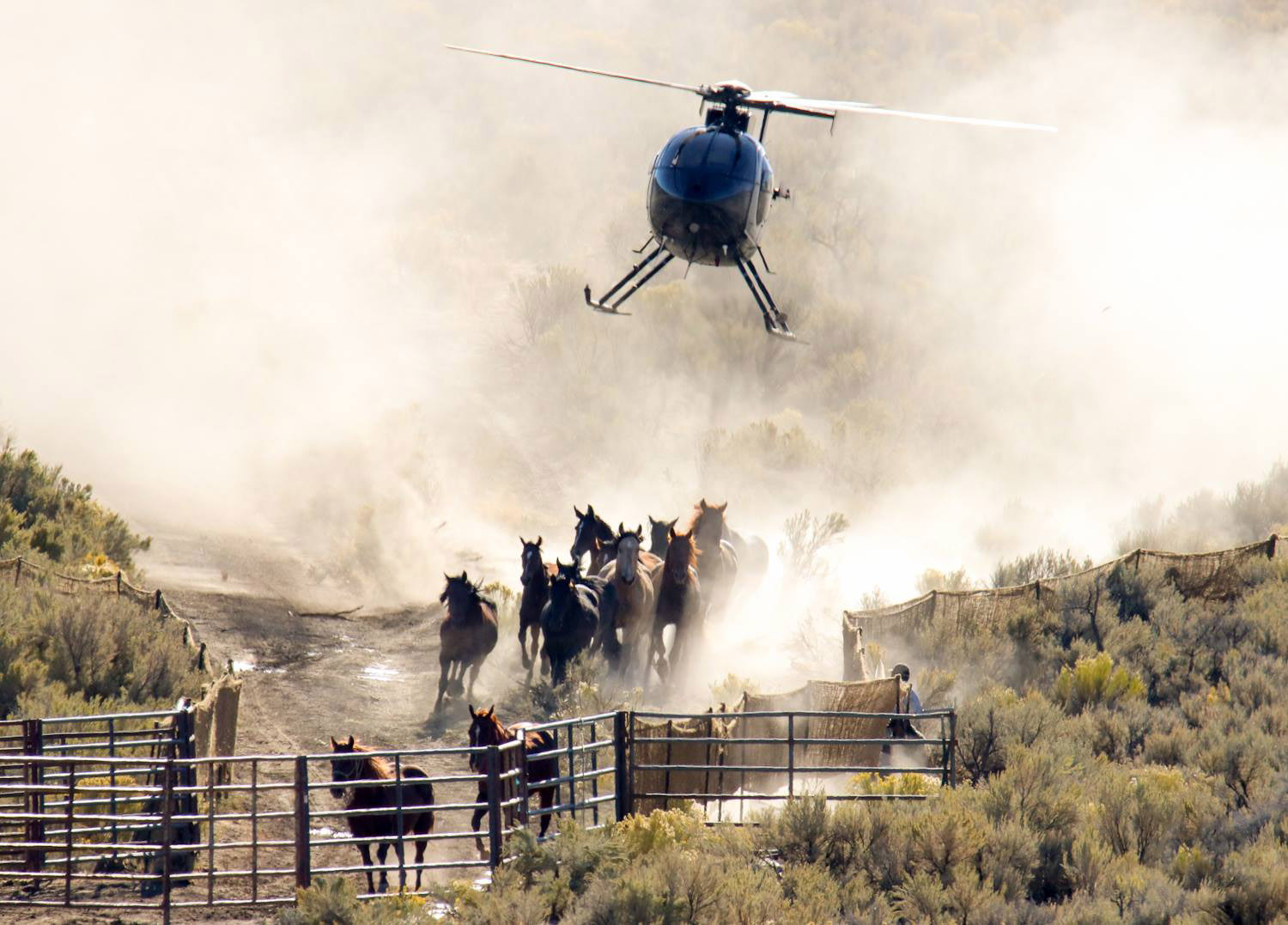President’s Budget Proposes Huge Increase in BLM Wild Horse & Burro Program for Mass Roundups and Risky & Cruel Sterilization Methods
Washington, DC (February 10, 2020). . . . The American Wild Horse Campaign (AWHC) today expressed alarm at the President’s Budget for FY2021, issued today, which seeks a 15% budget increase for the Bureau of Land Management’s (BLM’s) wild horse and burro program.
“We appreciate the Administration’s recognition that slaughter of America’s wild horses and burros -- the lethal option we have long worked to oppose -- is unacceptable to the Congress and the American public,” said Suzanne Roy, Executive Director of the American Wild Horse Campaign. “However, Congress just increased the BLM’s budget by 25% and now the Administration is asking it to throw even more money at a mass roundup, stockpiling and inhumane sterilization plan that has no scientific basis or public support.”
AWHC noted that the President’s budget calls for an additional $15 million increase to the BLM’s wild horse and burro program budget, which if granted by Congress, would see funding for the agency’s program soar from $81 million in 2019 to $116 million in FY 2021. The funds would be used for:
Helicopter roundup and removal of unprecedented numbers of wild horses and burros to reduce their populations to the BLM’s imposed limit, known as AML, of just 27,000, which the National Academy of Sciences found was not supported by science or transparent to the public. Inhumane population growth suppression methods that focus on the castration of wild stallions and risky, cruel and invasive surgeries to remove the ovaries of wild mares, both methods that the National Academy of Sciences warned against.
While the budget request also mentions humane fertility control, the BLM has consistently stated its intent to use inhumane surgical sterilization instead.
“We agree with the Administration that the Wild Horse and Burro Program is badly broken, but we don’t believe that recommendations of the nation’s leading scientific body should be thrown aside, no matter how many lobbying groups want to ignore them,” Roy concluded “We look forward to working with Congressional authorizing committees to ensure that reform of this program is consistent with science, the intent of the law and the will of the American people.”
The American Wild Horse Campaign (AWHC) is the nation’s leading wild horse protection organization, with more than 700,000 supporters and followers nationwide. AWHC is dedicated to preserving the American wild horse and burros in viable, free-roaming herds for generations to come, as part of our national heritage. In addition to advocating for protection and preservation of America’s wild herds, AWHC implements the largest wild horse fertility control program in the world through a partnership with the State of Nevada for wild horses that live in the Virginia Range near Reno.
###
Background
In 2013, the National Academy of Sciences (NAS) released a report entitled “Using Science to Improve the BLM Wild Horse and Burro Program: A Way Forward,” after a nearly two-year-long review. The NAS’ findings completely contradict the pillars of the current plan for wild horse roundup: mass removals to achieve AML and surgical sterilization of wild horses on the range.
The NAS on AML:
- The committee could not identify a science-based rationale used by BLM to allocate forage and habitat resources to various uses within the constraints of protecting rangeland health and listed species and given the multiple-use mandate.
- How Appropriate Management Levels (AMLs) are established, monitored, and adjusted is not transparent to stakeholders, supported by scientific information, or amenable to adaptation with new information and environmental and social change. Standards for transparency, quality and equity are needed in establishing these levels, monitoring them and adjusting them.
The NAS on removals:
- Removals are likely to keep the population at a size that maximizes population growth rate, which in turn maximizes the number of animals that must be removed through holding facilities.
The NAS on castration:
- A potential disadvantage of both surgical and chemical castration is loss of testosterone and consequent reduction in or complete loss of male-type behaviors necessary for maintenance of social organization, band integrity, and expression of a natural behavior repertoire.
NAS on ovariectomy:
- The possibility that ovariectomy may be followed by prolonged bleeding or peritoneal infection makes it inadvisable for field application.


